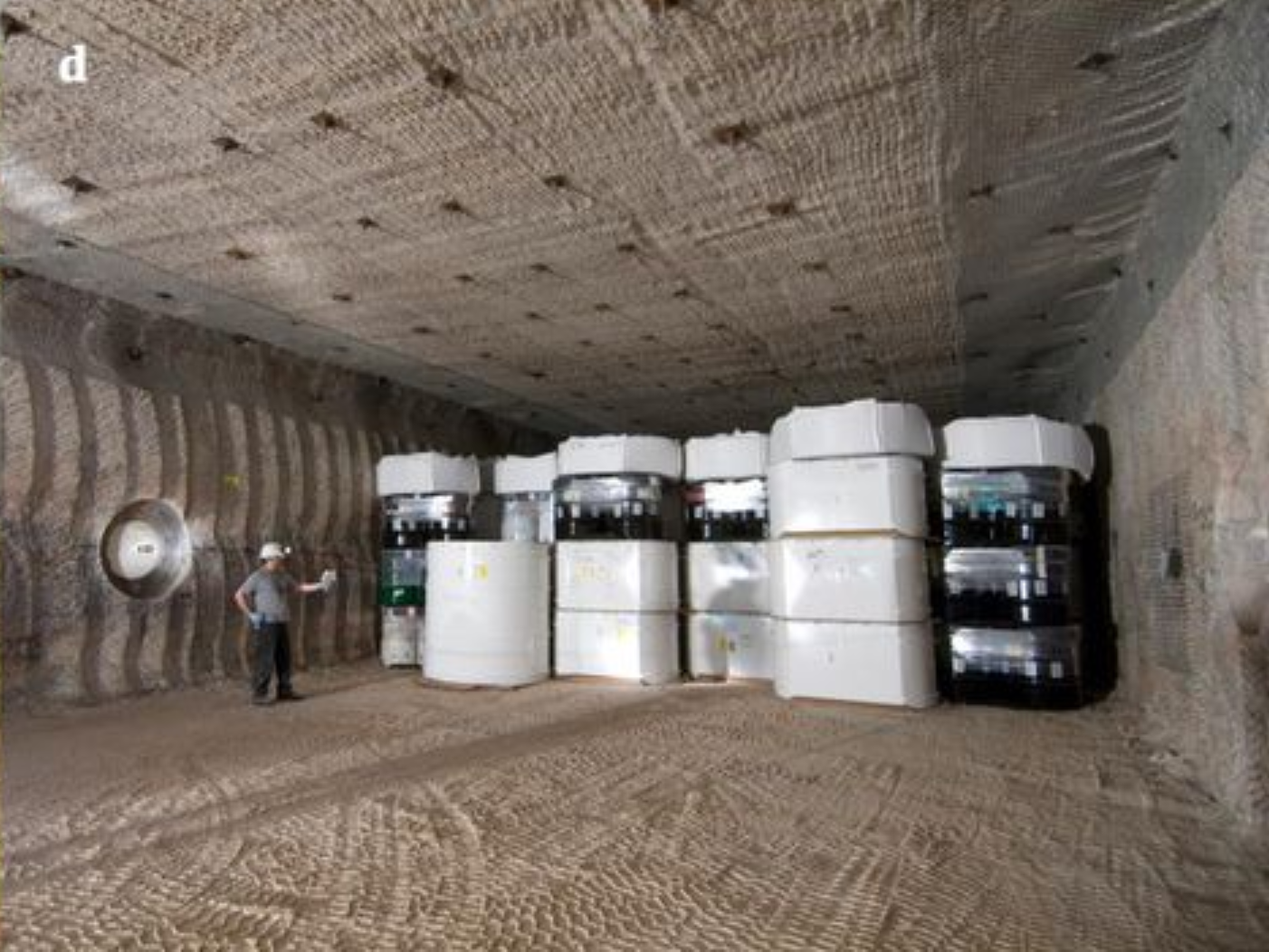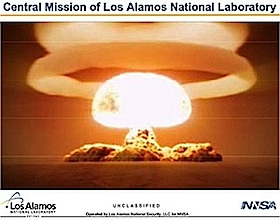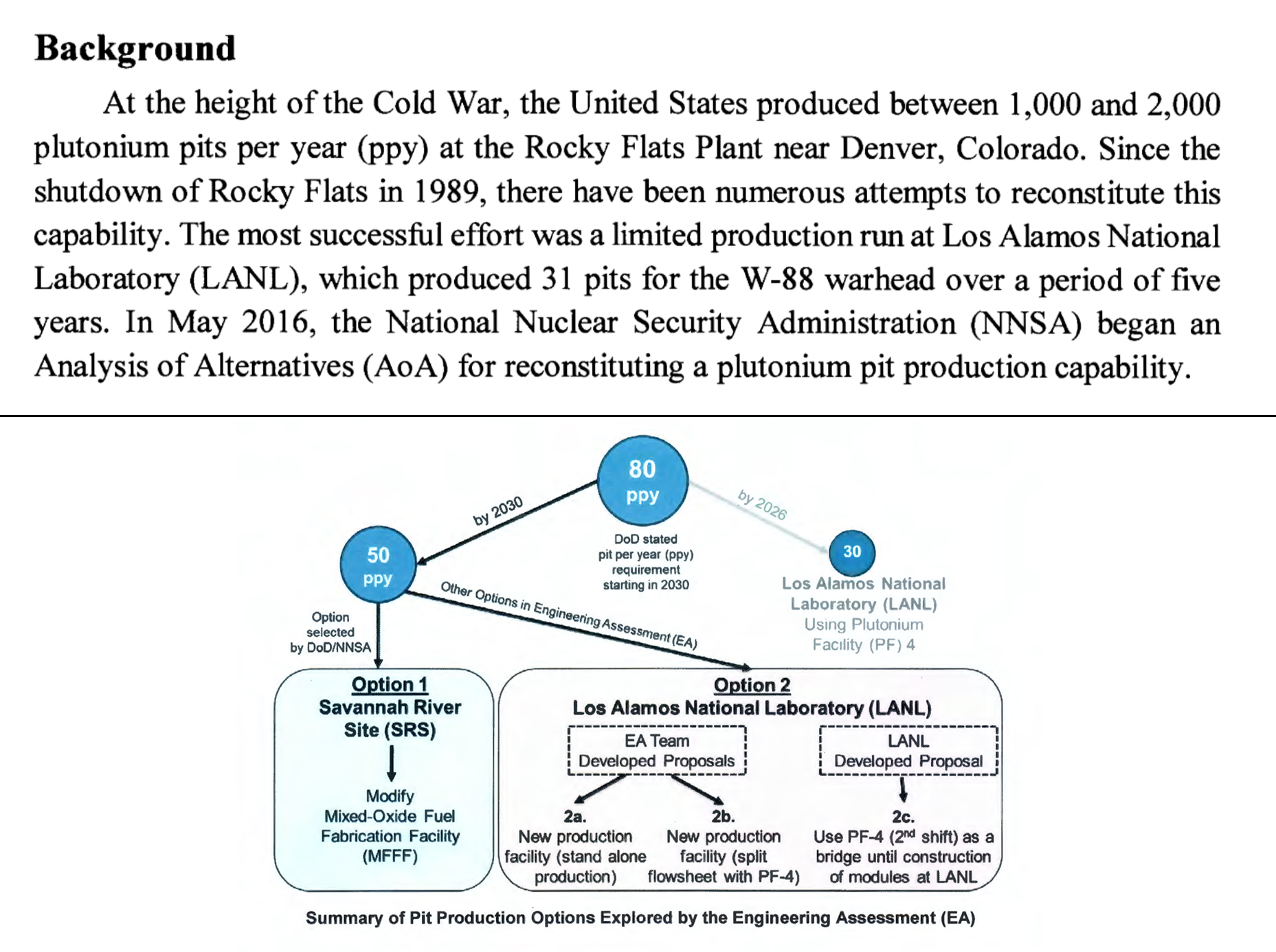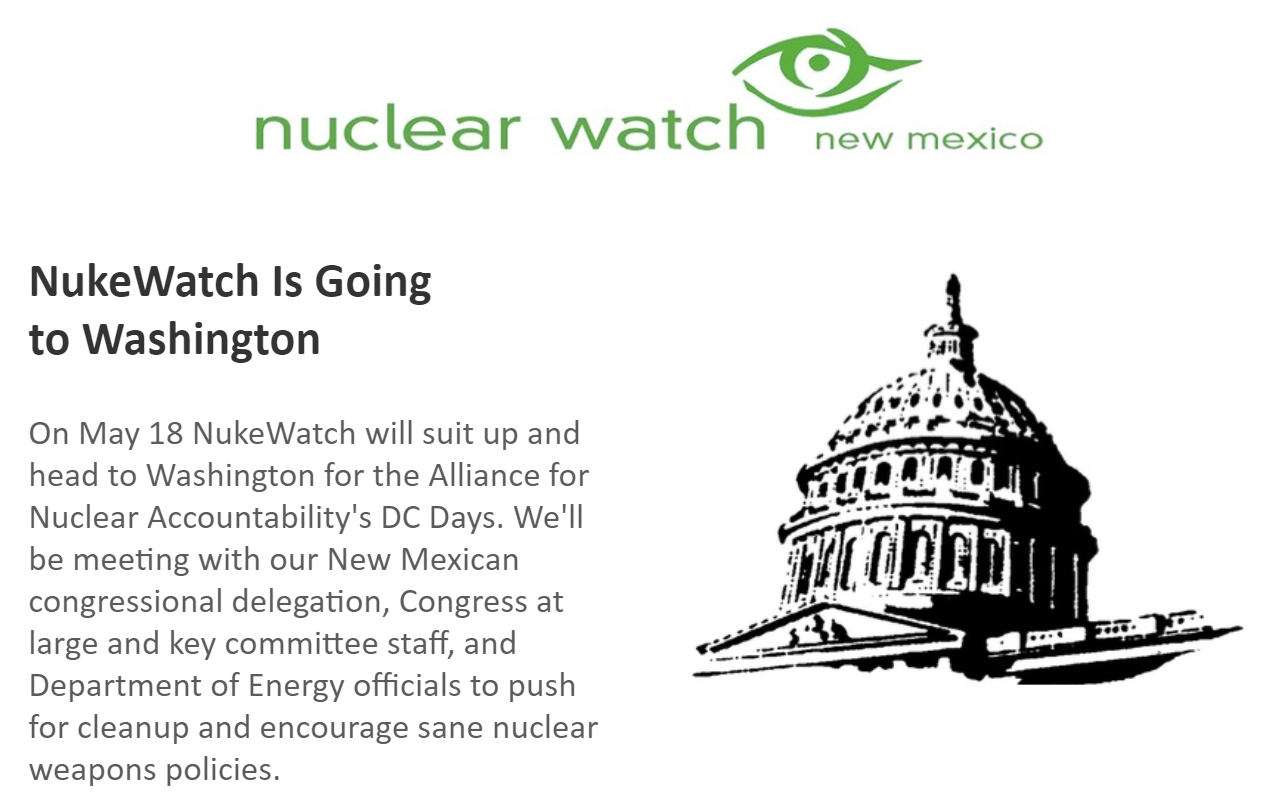2020
Nothing Found
It seems we can’t find what you’re looking for. Perhaps searching can help.
2019
Parties Prepare to Start Mediation Over WIPP Waste Volume

Face-to-face mediation is expected in June between public interest groups and the New Mexico Environment Department over changes to the way waste volume is calculated underground at the Energy Department’s Waste Isolation Pilot Plant (WIPP).
exchangemonitor.com | May 23, 2019
The New Mexico Court of Appeals often encourages mediation in cases involving state agencies in hopes parties can bridge their differences outside the courtroom, officials say.
A lawsuit filed in January by Nuclear Watch New Mexico and the Southwest Research and Information Center (SRIC), which challenged a change to the state hazardous waste permit for WIPP, has been stayed pending the talks.
New Mexico Court of Appeals Judge Linda Vanzi issued the stay May 2 and called for the parties to file a status report on the mediation by July 31.
The mediation itself should occur in late June, SRIC Administrator Don Hancock said by email.
Then-state Environment Department Secretary Butch Tongate in December authorized a permit modification allowing DOE to stop counting empty spaces between container drums as transuranic waste. The order adopted the findings of state hearing officer, who recommended waste volume counted against the disposal cap set by the 1992 WIPP Land Withdrawal Act should cover only the actual waste inside containers.
Study questions whether LANL, DOE can meet ‘pits’ production goal
Jay Coghlan of Nuclear Watch New Mexico said the report “makes clear that DOE is blowing smoke when it says that it will produce 80 plutonium pits per year by 2030 for new unneeded nuclear weapons. … They need to slow down, do it right and for sure do it safely. Above all the feds must concretely demonstrate a real need for expanded pit production before they fleece the American taxpayer of tens of billions of dollars.”
ARTICLE BY MARK OSWALD | abqjournal.com
SANTA FE – A recent study casts serious doubts on the potential success of any of the options considered by the U.S. Department of Energy for meeting mandates on the manufacture of plutonium cores for nuclear weapons – most of them involving Los Alamos National Laboratory.
The congressionally funded study also says that it would be “very high risk” to try to meet the nation’s ambitious goals for making bomb “pits” by installing more equipment and adding an extra work shift for a production “surge” at LANL’s existing plutonium facility, an idea that has been discussed.
Some of the risks cited in the report include whether there is the ability to stage, store and ship waste, and “the transport/transfer complexity of radioactive material.”
The study goes further and questions the overall plan to ramp up U.S. pit production, which is estimated to cost $14 billion to $28 billion, saying that “eventual success of the strategy to reconstitute plutonium pit production is far from certain.”
Continue reading
Federal workers struggle for years to prove they got sick on the job
Part 2 of NCR’s look at the toxic legacy of one nuclear weapons plant
BY CLAIRE SCHAEFFER-DUFFY | ncronline.org
The Kansas City Plant, pictured May 16, 2019, is under demolition by a private developer. The white bags in the foreground are designed to handle up to 3,000 pounds, or the equivalent of four 55-gallon drums, each of household hazardous waste. (NCR photo/Toni-Ann Ortiz)Editor’s note: As the government invests in the modernization of the U.S. nuclear arsenal, while weakening environmental regulations and federal laws protecting worker safety, National Catholic Reporter looks at the toxic legacy of one shuttered weapons plant in Kansas City, Missouri.
In a three-part series about the Kansas City Plant on Bannister Road and its successor eight miles south, NCR reviews hundreds of pages of government reports and environmental summaries, and interviews more than two dozen sources, including five plant workers and their families, three former federal employees who worked nearby, nuclear industry and government officials, health experts, business sources, state environmental regulators and a former city councilman. This is Part 2. Read Part 1 here.
If the Kansas City Plant was not a “dirty” site, then why were its workers getting sick and dying prematurely? The question haunted television reporter Russ Ptacek. In November 2009, he began investigating the Bannister Federal Complex, a 300-acre property that housed the post-war nuclear components plant as well as various federal offices leased by the General Services Administration (GSA). Ptacek began his inquiry after he was shown a list of nearly 100 sick and dying workers compiled by Barbara Rice, a retired data analyst, who worked for 31 years on the GSA side of the complex.
Nuclear Watch New Mexico & other members of the Alliance for Nuclear Accountability with Congresswoman Deb Haaland at #DCdays this evening. Thank you @RepDebHaaland for taking the time to meet with us! pic.twitter.com/vDyJmj07l9
— Nuclear Watch NM (@NuclearWatchNM) May 21, 2019
Congressman Ben Ray Lujan with Rose Gardner, Don Hancock, and Nuclear Watch NM leaders Scott Kovac & Jay Coghlan #DCDays #ANADCDays pic.twitter.com/Sbc7Ju4a2O
— Nuclear Watch NM (@NuclearWatchNM) May 21, 2019
“This report makes clear that DOE is blowing smoke when it says that it will produce 80 plutonium pits per year by 2030 for new unneeded nuclear weapons. After all, this is the gang that can’t shoot straight. They need to slow down, do it right and for sure do it safely. Above all the feds must concretely demonstrate a real need for expanded pit production before they fleece the American taxpayer of tens of billions of dollars.” — Jay Coghlan, Director – Nuclear Watch New Mexico
Frantic parents fear for kids after radioactive contamination found at Ohio middle school
“It’s so scary that my child has been exposed to this because I have no idea how it’s going to affect him,” one mother said.
BY SAFIA SAMEE ALI | nbcnews.com
Ashley Day has always worried about the health risks of living a few miles from a defunct nuclear power plant in Piketon, Ohio. So, when her son Kendon came home Monday and told her school had been canceled for the rest of the year, she had a sinking feeling there was a connection.
A few hours later, her fears were confirmed: The Scioto Valley Local School District declared in a letter that Zahn’s Corner Middle School would be shut down for the remainder of the school year because of possible radioactive contamination from the nearby Portsmouth Gaseous Diffusion Plant, which the federal Department of Energy is in the process of decommissioning.
“I felt anxiety, anger, and paranoia all at once,” she said. “It’s so scary that my child has been exposed to this because I have no idea how it’s going to affect him.”
Editorial: LANL leaders must make safety the lab’s top mission

Falling short of the bare minimum in the eyes of the DOE is a far cry from where the public expects or needs LANL to be.
The Albuquerque Journal Editorial Board has a great editorial except for this part –
Because LANL is home to some of the best and brightest in the nuclear industry. It is the home of the Manhattan Project. And its future is important not only to the prosperity of our state, but also to our national security.
Editorial: LANL leaders must make safety the lab’s top mission
“Falling short of the bare minimum in the eyes of the DOE is a far cry from where the public expects or needs LANL to be.”
Credit: Christopher Thompson for The New York TimesBY ALBUQUERQUE JOURNAL EDITORIAL BOARD | cnn.com
A new lab manager, a new mission to modernize the nation’s nuclear arsenal with 30 plutonium “pits” for nuclear bombs, and the same old lackadaisical approach to safety.
Welcome to Los Alamos National Laboratory, a company town where the culture is apparently so ingrained, even tough Department of Energy criticisms are unable to penetrate. At a time when saber-rattling is de rigueur, when concerns over North Korea’s arsenal and a nuclear Iran are high, when HBO is airing “Chernobyl,” that does nothing to instill public trust.
LANL got dinged last year after it mistakenly used a commercial air cargo service for a cross-country radioactive plutonium shipment. In 2014, LANL’s use of the wrong kitty litter burst a storage barrel and prompted a nearly three-year shutdown of the nation’s one-and-only nuclear waste repository, WIPP in Carlsbad. And the year before, a general slate of safety issues at the lab prompted a moratorium on plutonium work.
The latest weaknesses “if uncorrected, can allow layers of defense for nuclear safety to degrade to the extent they did leading to the pause in July 2013 of key fissile material operations in the Plutonium Facility at LANL for over four years,” the DOE audit says.
And that is a huge issue considering the lab is ramping up production on the devices that act as nuclear bomb triggers. The 30-pit order is expected to be met in six years, and there’s no other facility in the country that can fill it.
Ohio town worries about safety after radioactive contamination is found at middle school
On Monday, Zahn’s Corner Middle School in Piketon was closed because enriched uranium had been detected inside the building and neptunium-237 had been detected by an air monitor next to it.
BY CHUCK JOHNSON & SUSAN SCUTTI | cnn.com
(CNN) Are we safe? That’s the concern that’s been in the back of neighbors’ minds when they look at the looming Portsmouth Gaseous Diffusion Plant in Pike County, Ohio, Jennifer Chandler said.
“It looks like they make clouds there,” the Piketon village councilwoman thought as a child, seeing steam coming out of the stacks. “When I was growing up, I didn’t have any idea what they did.”
The US Department of Energy plant was built to produce enriched uranium for the nation’s nuclear weapons program during the Cold War and, in later years, supported commercial nuclear reactors. One of three such plants in the United States, it operated from 1954 to 2001, when it commenced decontamination and decommissioning, which continues today.
In the past five years, five students in the nearby Scioto Valley Local School District have been diagnosed with cancer; three of them have died, Chandler said.
2018
Nothing Found
It seems we can’t find what you’re looking for. Perhaps searching can help.
2017
Nothing Found
It seems we can’t find what you’re looking for. Perhaps searching can help.
2016
Nothing Found
It seems we can’t find what you’re looking for. Perhaps searching can help.
2015
Nothing Found
It seems we can’t find what you’re looking for. Perhaps searching can help.


